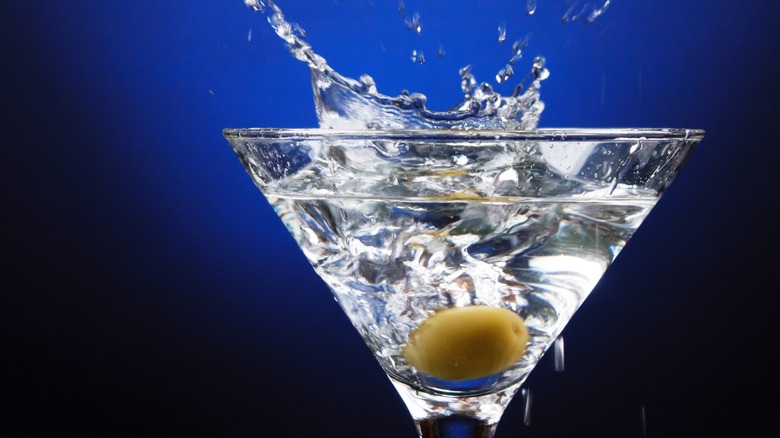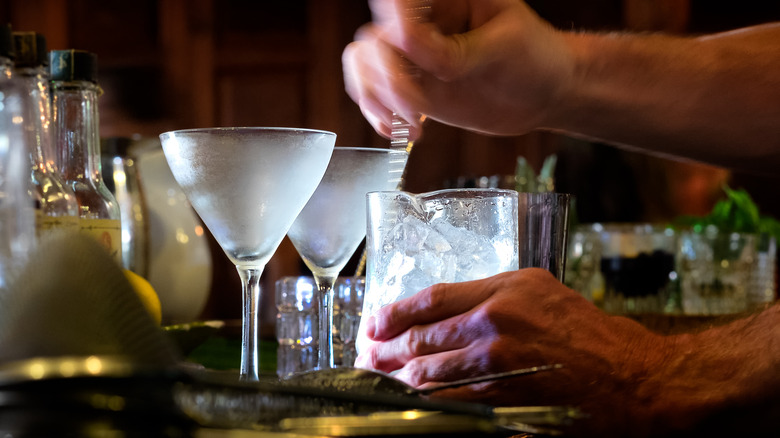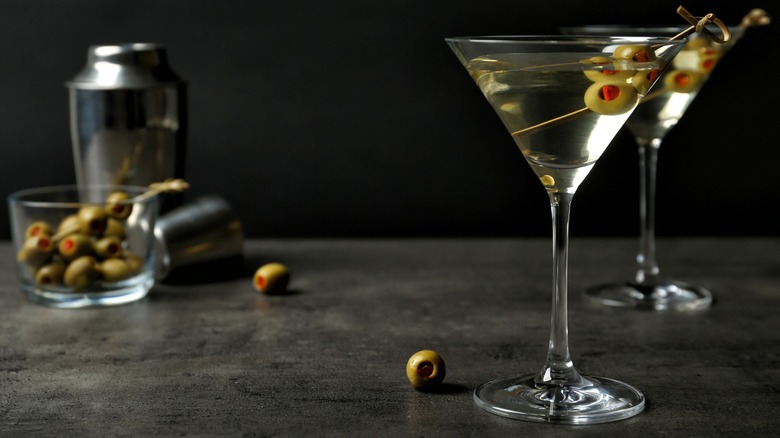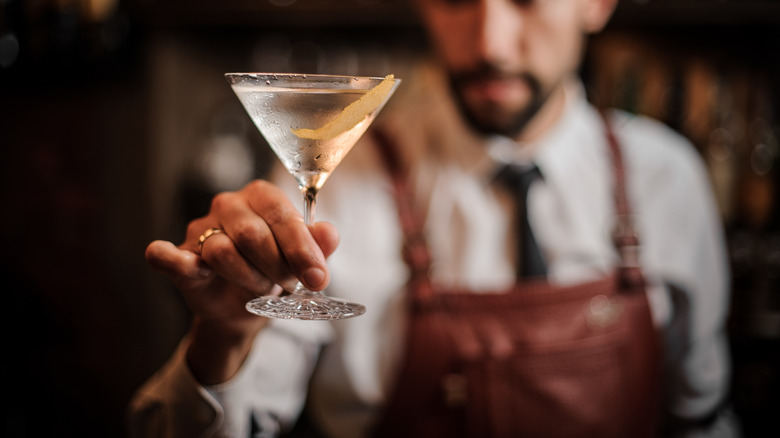Shaken Or Stirred: Bartenders Help Settle The Martini Debate Once And For All - Exclusive
Shaken Martini or stirred? That's a question people have been debating since the iconic cocktail was invented in 1911 — which is just one of the many facts you should know about the Martini. Tasting Table set out to settle the debate once and for all in an exclusive round-up of responses from four different spirit experts, cocktail strategists, professional beverage directors, and bartenders.
Here, Molly Horn of Total Wine & More, Rob Krueger of Smith & Mills Rockefeller Center, Andy May of The Golden Swan, and Carlos Gomez of Tiny's & The Bar Upstairs come together to offer you their professional opinions on the century-old debacle.
From when to stir and when to shake to "dirty dumping," and from garnishes to the case of "bruising" your gin — a phrase that refers to the chemical reactions that occur when shaking a Martini, ranging from mixing aromatic notes from top to bottom and diluting the botanicals with ice and air — these experts get down to the nitty-gritty Martini business, ice chips and all.
The right time to stir
The vast majority of our experts opted for a stirred Martini — if not for the smooth, round texture and ideal temperature, then for the aesthetic. "For small gatherings with moody lighting, stirring is the way to go. It's about keeping the ambiance and vibe cohesive," Andy May, Head Bartender at The Golden Swan, told Tasting Table. One can assume that the "vibe" May refers to is that of being a classicist — something our other experts' responses were also in tune with.
"I, for one, am a classic Martini man — and that means gin, stirred," said Rob Krueger, the Beverage Director at Smith & Mills Rockefeller Center. He went on to explain that the aeration of shaking a Martini can adversely affect the aromatic nature of gin and lead to over-dilution, not to mention the ice chips that shaking creates in the glass, which he calls "a textural mismatch to the suave, silky texture most connoisseurs seek."
Two experts commented on the possibility of bruising the gin. Both Krueger and Molly Horn, Manager of Cocktail Strategy & Spirits Education at Total Wine & More, claim that there is a case for it. Horn said, "If I'm doing a classic Martini, I prefer stirred – you want that smooth, round texture that comes from perfectly chilling a cocktail without introducing any bubbles that come from the agitation of shaking. Also, you want to preserve the integrity of the spirit by not 'bruising' it."
When to shake it up
According to the experts, shaking your Martini comes down to two things: the establishment you're drinking at and the specific Martini variation. Just as Andy May said they preferred a stirred Martini for small gatherings, the opposite applies anywhere with a less-than-stylish ambiance. "At dive bars, I love my Martinis shaken ... The nonchalantness where it's even served in a rocks glass (bonus points if 'dirty dumped')," they said. ("Dirty dumped," in bartender talk, refers to the technique of pouring the contents of a cocktail shaker directly into the glass without a strainer — and May isn't the only one of our experts who gave it extra points.)
Molly Horn is all for shaken Martinis — but only if they're dirty. After explaining her stance on stirring classic Martinis to preserve the spirit, Horn told Tasting Table that, if it's a dirty Martini, there's no need for all that. "I love an extra dirty, hard-shake vodka Martini – no fine straining so there are little tiny bits of ice as you sip!" Rob Krueger is also a fan of the fine ice chips that shaking lends to dirty Martinis.
But he also makes another good point. "I'll stand up for the Vodkatini drinkers who want a frothy, frozen glass of booze. The aeration actually makes vodka more expressive on the palate," he says. Carlos Gomez, Head Bartender of Tiny's & The Bar Upstairs, on the other hand, had nothing to say for shaken Martinis. "I always go for stirred ... I'm a classicist," he declared.
What's the most important factor in making a great Martini?
There are a few key ingredients that make a Martini perfect. If dirty, Molly Horn made a point about the quality of the mix. "Honestly, the quality of your dirty mix is just as important as the quality of vodka or gin you like," she said. But it's also about how you use them. While Carlos Gomez had nothing to say for shaken Martinis, he, Horn, Rob Krueger, and Andy May did agree that the most important factor for any Martini is not only that they're chilled properly, but that they have what Gomez described as "just enough dilution plus the precise ration of your vermouth or olive brine."
According to Horn, that means "using good, ideally large square ice cubes when stirring and filling your mixing vessel all the way to the top with said ice — that way it won't melt too fast before getting the cocktail properly chilled." She then explained that it's difficult to say exactly how long you should stir, "But if you are using large square ice a good general rule is 40 to 50 rotations." Using cold tools will also help, according to Andy May.
Aside from the technicalities, Krueger believes that the key to a great Martini is "good company and a convivial atmosphere." You really can't argue with that. That is, as long as it's garnished correctly. "I don't prefer a salad bar in my drink, rather a simple olive or thin lemon twist to seal the deal," said May.



